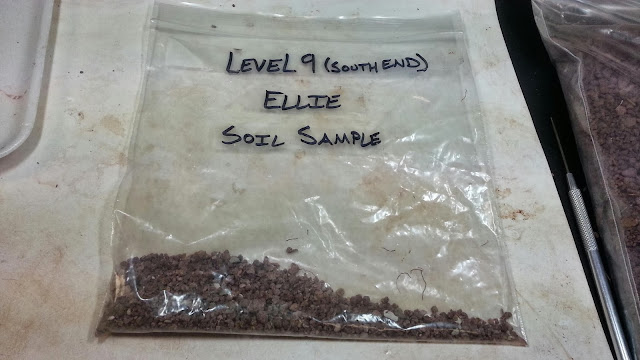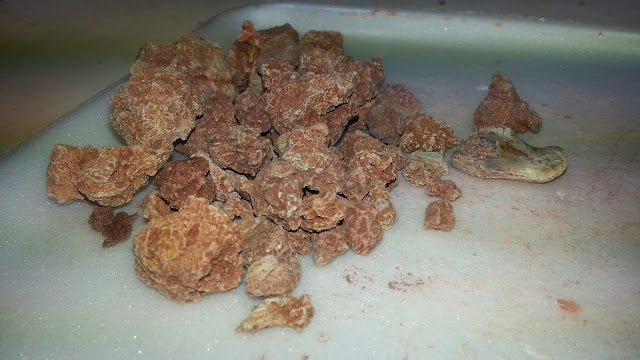Monday, November 11, 2013
Day 7: Jane's Back
Day 6: More Jacket and The Big Block
Day 5: First Jacket
On October 25th I started my first jacket. A jacket is basically dirt containing a specimen covered in plaster. The plaster is cut off on the top and you brush off all the extra dirt and start to chisel on the hard dirt, and you have to keep track of all the dirt for soil samples. My jacket contains the spine from a Dimetradon named Jane. Bellow are a few pictures of my jacket as I started to work on it.
Wednesday, October 23, 2013
Day 4: Ellie and Tiny Teeth
Tuesday, October 8, 2013
Day 3: Ellie the Dimetrodon
Wednesday, October 2, 2013
Day 2: Soil Samples and Paleontology Hall Installations
I had the second day of my internship at HMNS on September 20, 2013.
I started out with soil samples, which was where I left off last time. This time I had a little more of an idea of what I was looking for. Basically bone is shiny, so if you see something shiny it's most likely bone. You can also look for odd textures that you wouldn't expect to find on rocks. So far the two things I've found with odd texture are pieces of shark cartilage and parts of amphibian skull. Digging through the soil this Friday I found quite a few bone fragments and pieces of shark cartilage. I also found three tiny reptile/amphibian teeth, a piece of amphibian skull, and half of a Demetradon tooth (they are in this order in the pictures).
After this we had a change of plans so we went over to the Paleontology Hall and helped install two fossils. One was a feline fossil that kept loosing its ribs and the other was a male Goffer Tortise shell.
Wednesday, September 18, 2013
My First Day: Dipsy and Soil Samples
Hi my name is Emily Randall. I go to The Post Oak High School in the Houston museum district. On September 13th, 2013, I started my internship with David Temple, the head of Paleontology at the Houston Museum of Natural Science, HMNS for short.
When I got there I went with a volunteer to put a second coat of the base paint on Dipsy the Diplodontus' hip bone for the cast we're making. The reason for this cast is to look at the teeth or claw marks on the hip bone. This is important to look at further because if these are claw marks than is likely this dinosaur was a female. Funny story, it turns out the volunteer I was working with was the mom of one of my friends who I went to Costa Rica with in the summer after 7th grade.
After this I went and dug through soil samples. Soils samples consist of the dirty that's collected around a fossil. When you go through these you pull out any bone, teeth, cartilage, poop, etc that your find. These fossils help to get a took at what was around the larger fossil you're looking at. When you know this you can start to piece together what the environment that the animal lived in.
I had a lot of fun on the first day of my internship and can't wait to go again!



























